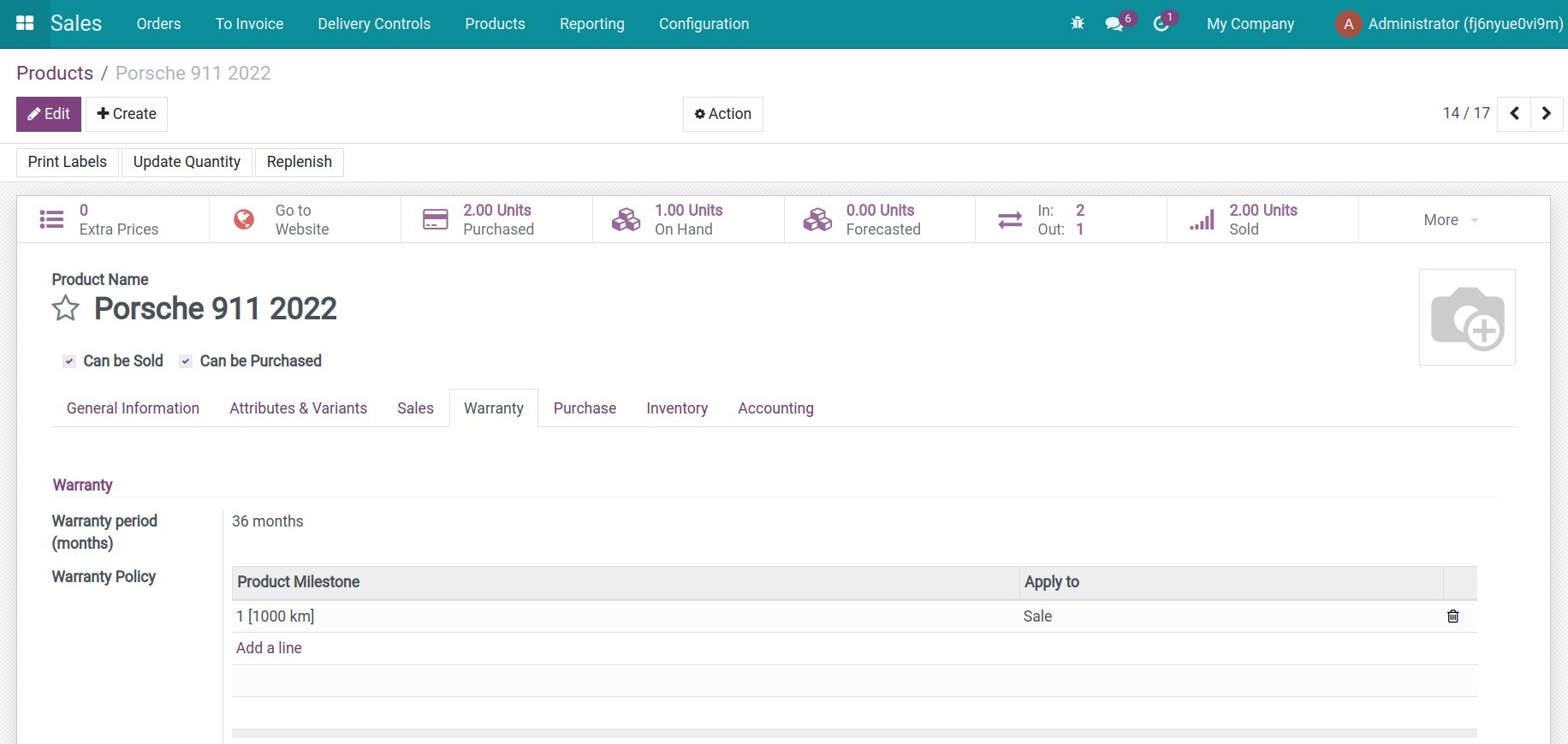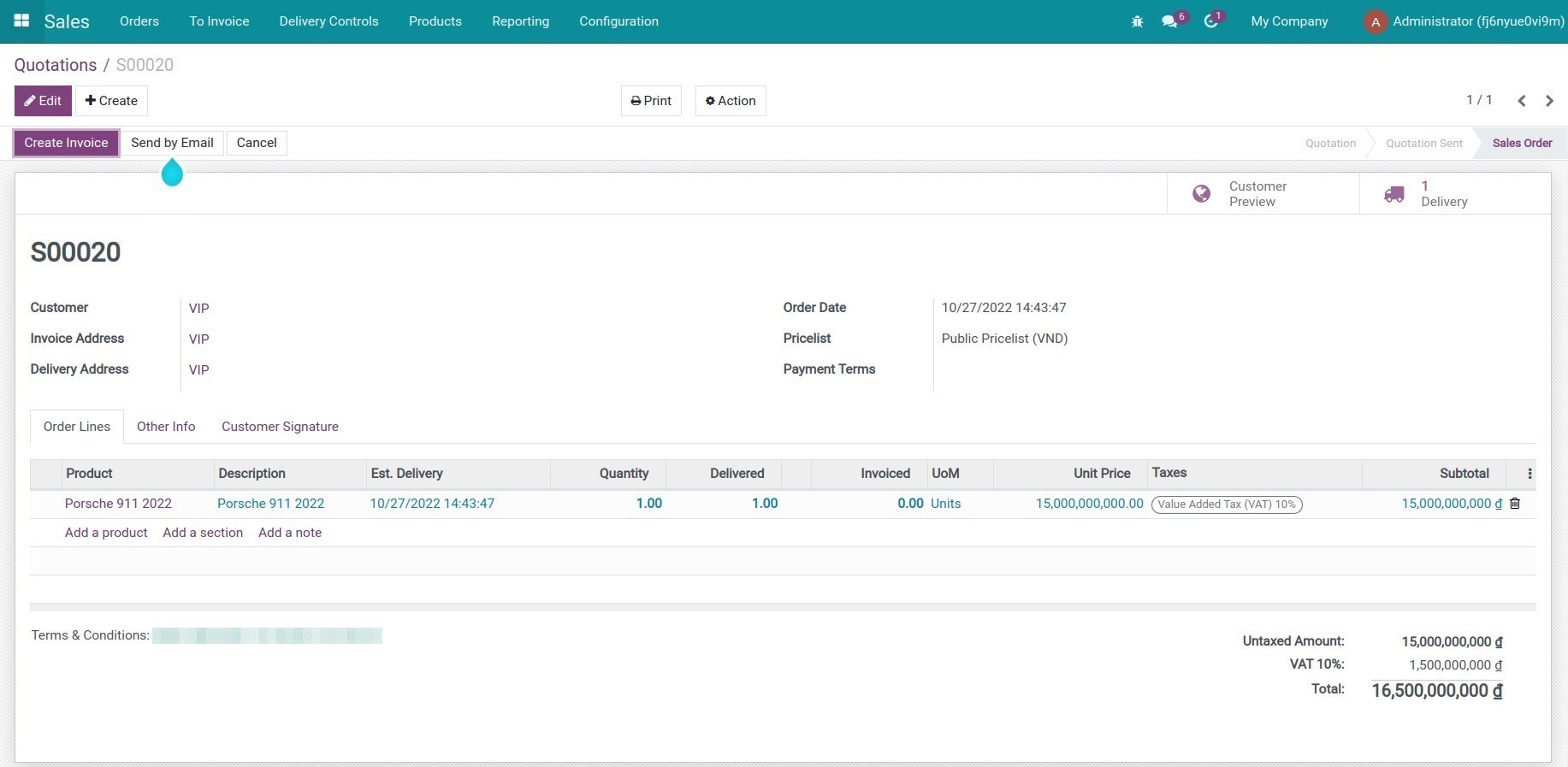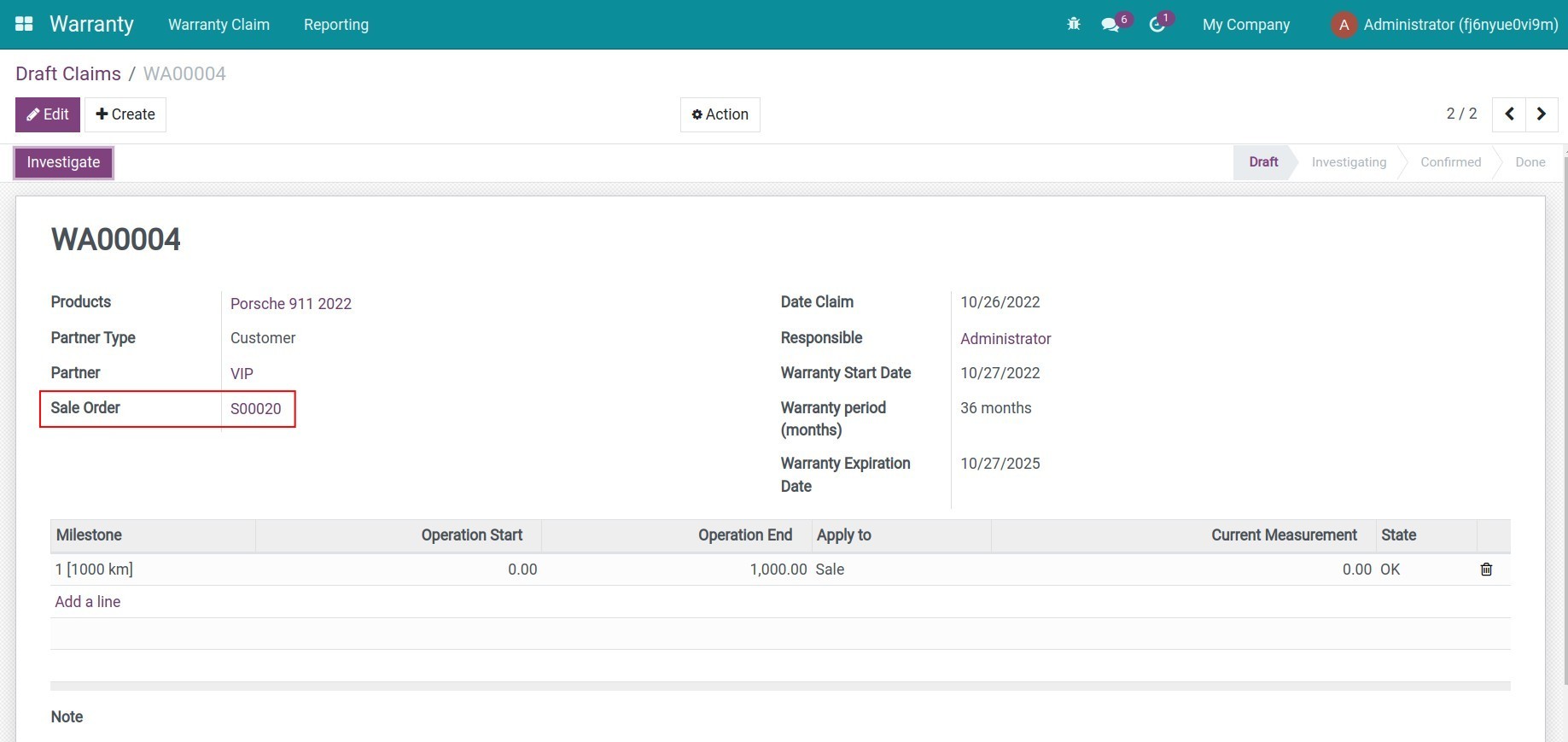Demo video: Warranty Sale
Problems
By default, warranty policies are not applied to the relevant sales order. Therefore, product warranties are difficult to manage.
Key Features
- To manage product warranties, the system automatically attaches product warranty claims to the relevant sales order.
- When creating a warranty claim with a SO information, the warranty policy applied to this sales order will automatically apply to the warranty claim.
Editions Supported
- Community Edition
- Enterprise Edition
Installation
- Navigate to Apps.
- Search with keyword to_warranty_sale.
- Press Install.
Instruction
Instruction video: Warranty Sale
1. Set up access rights
Navigate to Settings > Users & Companies > Users, select an existing user, or press Create to create a new user. Provide this user the access right to the Sales app, the system will auto add the Warranty User right.

With this access right, the employee can create/edit/work on the warranty claims.
2. Manage product warranty information
Create a product and set up the customer's warranty information such as warranty period, warranty milestone.

3. Create sales order
Navigate to Sales > Orders > Quotation, press Create to create a Quotation, after filling in the information, press Confirm to change the Quotation to a Sales Order.

4. Create and manage warranty claims
Navigate to Warranty > Warranty Claim > Draft, and press Create to create a customer warranty claim. Here, the system will show the sale order that attached to the selected customer and at the same time, shows the warranty policy of that product.

Press Save to save the information. After confirming that the information on the claim is accurate, press Investigate to start investigating the warranty claim.
5. Track the warranty claims that are attached to the sale order
Return to the sale order, you can track the quantity of the warranty claims attached to this sale order

This software and associated files (the "Software") may only be
used
(executed, modified, executed after modifications) if you have
purchased a
valid license from the authors, typically via Odoo Apps,
or if you
have
received a written agreement from the authors of the
Software (see the
COPYRIGHT file).
You may develop Odoo modules that use the Software as a library
(typically
by depending on it, importing it and using its
resources), but
without
copying any source code or material from the
Software. You may distribute
those modules under the license of your
choice, provided that this
license
is compatible with the terms of
the Odoo Proprietary License (For
example:
LGPL, MIT, or proprietary
licenses similar to this one).
It is forbidden to publish, distribute, sublicense, or sell
copies of the
Software or modified copies of the Software.
The above copyright notice and this permission notice must be
included in
all copies or substantial portions of the Software.
THE SOFTWARE IS PROVIDED "AS IS", WITHOUT WARRANTY OF ANY KIND,
EXPRESS OR
IMPLIED, INCLUDING BUT NOT LIMITED TO THE WARRANTIES OF
MERCHANTABILITY,
FITNESS FOR A PARTICULAR PURPOSE AND
NONINFRINGEMENT. IN NO EVENT
SHALL THE
AUTHORS OR COPYRIGHT HOLDERS
BE LIABLE FOR ANY CLAIM, DAMAGES OR OTHER
LIABILITY, WHETHER IN AN
ACTION OF CONTRACT, TORT OR OTHERWISE,
ARISING
FROM, OUT OF OR IN
CONNECTION WITH THE SOFTWARE OR THE USE OR OTHER
DEALINGS IN THE
SOFTWARE.






